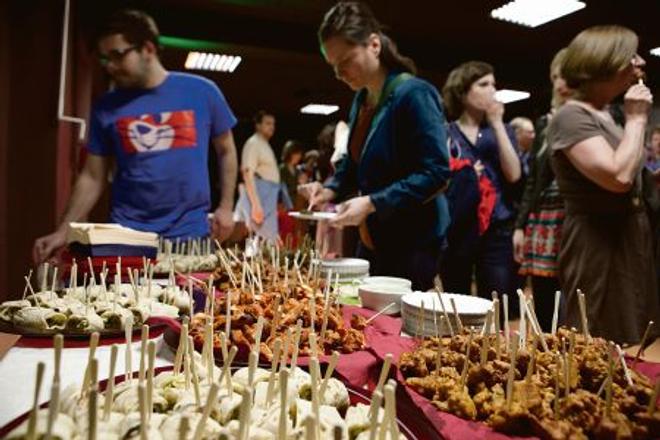THEY say that love can arrive through the stomach and a group of foreign nationals living in Slovakia who participated in the events of [fjúžn] festival learned that there is some truth to these words. During Hedonistic Sunday, a festival event aimed at opening up participants to dishes from different cultures, the owner of the Ashoka Indian restaurant in Bratislava, Akshay Kumar Dixit, explained that food preferences can be an important factor when looking for a mate in his native India.
Along with getting a look into the cultures of foreigners living in Slovakia, Hedonistic Sunday helped to correct some participants’ misconceptions about traditional food from different parts of India. For example, many Slovaks associate what Europeans call curry with Indian cooking but Dixit explained that this assumption is incorrect.
“Curry spice has nothing to do with us [Indians]. It is a European invention and we think of curry as a sauce not a spice,” Dixit told The Slovak Spectator. “We do not even know the source of this curry and we do not use it [in our cuisine].”
Curry powder is, according to Wikipedia, a commercially prepared mixture of spices and is largely a Western invention dating from the 18th century. Such mixtures are thought to have originated by Indian merchants created to sell to members of the British Colonial government and army upon their return to Britain.
Traditional food also frequently showed up on artwork produced by some asylum seekers in another event at [fjúžn], during the closing party, entitled [fjúžn] on the Run. Two artists, Slovak painter Daniela Krajčová and Dutch photographer Illah Van Oijen, prepared a workshop where participants were asked to draw a picture from memory of something they remembered from their homelands.
It was the first crack at drawing for most of them and some of the work was startlingly good. Naqui, a young boy from Afghanistan, produced an impressive drawing of the Afghan mountains.
Although Slovaks are proud of their High Tatras mountains, Naqui said he could never get used to how flat Slovakia is.
This page was prepared by Tímea Becková, Roman Cuprik, Michaela Džomeková, Miroslava Germanová, Kristína Hamárová, Karolína Kučerová, Radka Minarechová, Martina Raábová, Lenka Sabová, Natália Semianová and Carmen Virágová. The authors are all participating in the Reporting Diversity programme, which is aimed at training young journalists to report on diversity and minorities within Slovak society. The programme is prepared by The Slovak Spectator in cooperation with Comenius University's School of Journalism and is supported by the US Embassy in Bratislava.


 People got to taste various foods during the festival. (source: Radovan Dranga)
People got to taste various foods during the festival. (source: Radovan Dranga)